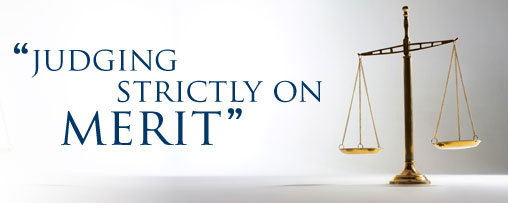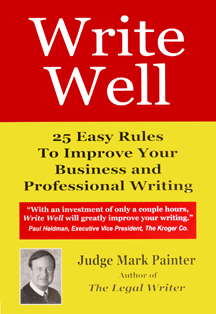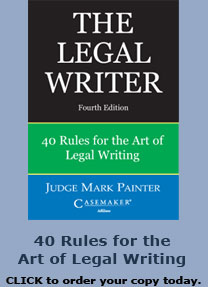‘Relanguage’ that
By Judge Mark P. Painter
After hours of reading briefs, sometimes I like to read other material. Some publications are well written – The Wall Street Journal or Fortune, for example.
And then there’s the opposite – academic, business, or government publications, which are usually full of jargon. Some can make even lawspeak seem intelligible.
I saw an example recently: relanguage. As in, “we need to relanguage that document.” As if that were something different from rewrite. English has plenty of words. Unless a new coinage actually adds something to meaning, use a word your readers already understand.
The website Buzzwhack.com lists newly minted jargon. Here are my favorites:
Synopsize. To condense the details of a boring, two-hour meeting into a briefer – yet still as boring – version.
-
Mission-critical. Another sign that too many people in today’s business world have read too many Tom Clancy books. What’s wrong with the word “essential”?
-
Multi-slacking. The act (or art) of performing multiple non-productive tasks at once.
-
Undertooled. Lacking the proper tools to do the job – whether it’s the correct wrench or a college degree. “Without an MBA, I’m undertooled for that position.”
-
User-centric. A novel concept where products and services are designed with the user in mind.
More examples
The Plain Language International listserve I belong to is a trove of examples. This one is from a job ad:
Humantific Understanding Designers. Humantific partners with organizations to make sense of and solve complex unstructured business challenges, visualize strategic stories and build sustainable cross-disciplinary innovation capabilities. Spanning multiple industries our clients include global Fortune 500 companies and entrepreneurial start-ups. Using our hybrid human-centered toolbox we help organizational leaders build tools, manage change and create paths into the future. In doing so we change the way organizations think about and work with multidisciplinary design companies. . .
Might be my next job. Seems that they use tools to make tools. Maybe it’s a machine-tool company. To find out more, I Googled Humantific Understanding Designers. This is from a random paragraph from the first page that came up:
In the context of this new operating space there is need for skills that bridge across many disciplines and challenge types. To do that requires deep process mastery. To say this another way, horizontal process knowledge has become as important as vertical content knowledge. It would be a mistake to assume that innovation today springs from content knowledge alone.
I think they need to relanguage that.
First a hurricane, then a flood – now this
Bill DuBay, a plain-language expert and head of Impact Information Plain-Language Services (www.impact-information.com), picked this up from the Louisiana website for Katrina victims:
The Assistance Centers will help mitigate the potential for misunderstanding and abuse by providing standardized, structured, and guided relationships between homeowners and service providers. In addition, the Assistance Centers will maintain registries of professional service providers and building contractors. Through the Solicitation for Offer, Assistance Centers will be directed by the selected management firm and staffed by contracted experts, which may include non-profit organizations specializing in providing advisory services to homeowners. (79 words, 16th-grade reading level)
Bill easily rewrote (maybe relanguaged) it thus:
Use the Assistance Centers if you have problems with builders or other services. These centers also keep lists of approved builders and services. We will attempt to select companies and non-profit groups who can best run these centers. (38 words, 8th-grade reading level)
Readability
I always show the readability scores for the column. Statistics for this column (excepting the quotes, of course, which are unintelligible): 8 words per sentence, 7 percent passive voice, and grade level 8.8.
____________________________________
Mark Painter has served as a judge on the Ohio First District Court of Appeals for 11 years, after 13 years on the Hamilton County Municipal Court. Judge Painter is the author of The Legal Writer: 40 Rules for the Art of Legal Writing. It is available from http://books. lawyersweekly .com. Judge Painter has given dozens of seminars on legal writing. Contact him through his website, www.judge painter.org.








